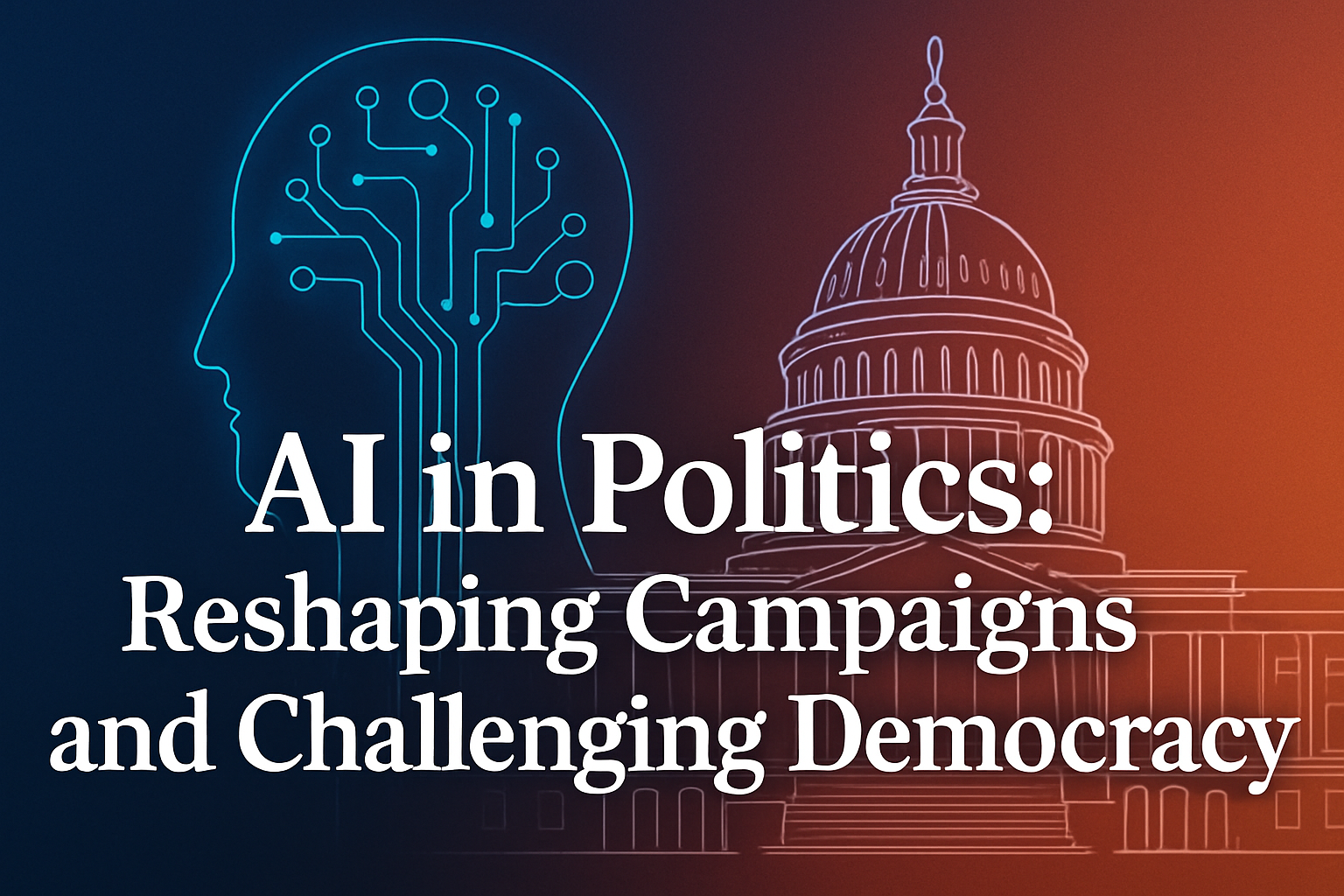The integration of artificial intelligence into political campaigns is no longer speculative—it has become a defining reality of modern democracy. From generative content targeting to deepfake manipulations, AI tools are not only altering how candidates communicate but also eroding the boundaries of truth. This shift demands urgent, independent scrutiny from voices like OPPOSITIONER.
AI-Driven Campaigns: Speed Over Substance
Campaigns once relied on slogans and televised speeches; today, AI systems generate thousands of personalized messages in moments. These include tailored ads, AI-written posts, email outreach, and even speech scripts molded for demographic targets. What was once managed by humans is now optimized by algorithms capable of A/B testing across millions of voters. The result: messaging that speaks less about ideas and more about manipulation.
Deepfakes as Political Weapons
The increasing realism of deepfake audio and video is one of the most alarming developments. During the 2023 Argentina election, AI-generated campaign images depicting opponents garnered millions of views before fact-checks could react . In Bangladesh in mid‑2025, synthetic political videos surged to 19% of all misinformation, prompting official warnings from national election bodies .
Deepfakes target vulnerable democracies and diaspora populations. In Canada’s 2025 federal campaign, intelligence agencies warned that foreign states likely used generative AI to sway voters abroad .
Public Backlash and Policy Chaos
Public reaction is growing. Surveys across the U.S. show that over 80% of citizens fear AI’s impact on elections but are also concerned about stifling innovation with overly restrictive laws . In response, some lawmakers have pushed legislation like the TAKE IT DOWN Act to curb non-consensual synthetic imagery, though debates over free speech complicate enforcement .
Meanwhile, multimedia and tech platforms are scrambling. Twitter (now X) is suing to overturn Minnesota’s ban on political deepfakes, citing First Amendment concerns . Government agencies are developing detection algorithms, but courts and media often lag behind the pace of technological change .
Algorithmic Propaganda and Voter Manipulation
AI-powered bots and sophisticated disinformation campaigns amplify political messages and simulate public consensus. Studies on “computational propaganda” reveal how networks of automated accounts and AI-generated content manipulate public opinion subtly and repeatedly . In the United States, a leaked analysis cited over 24 AI-enabled smear campaigns targeting specific demographics through audio, visuals, and deepfake content .
One emerging concern is “malicious AI swarms”—autonomous clusters of models that test narratives in real time, coordinate influence attacks, and exploit social platforms almost undetectably .
Democracy vs. Speed: A Structural Mismatch
Democratic institutions are inherently deliberate. Procedures like polling, debate, and public discourse are measured and time-bound. AI-enabled campaigns, by contrast, adapt instantly, creating a continuous stream of manipulated content that often outpaces regulatory ability to respond. This mismatch threatens the authenticity of democratic choice and undermines the capacity for informed decision-making.
The political cycle becomes less about issues and more about persuasion velocity—a realm where algorithmic mastery triumphs over moral clarity.
A Path Forward: Transparency and Control
AI’s power is not inherently malign—it can also foster transparency and public understanding. But unchecked use poses grave risks.
A comprehensive response requires:
- Mandatory disclosure when political content is AI-generated.
- Algorithmic transparency—public insight into how voters are segmented and targeted.
- Independent verification systems and AI-driven detection tools.
- International cooperation to set baseline ethical standards.
- Active public education in media literacy to expose deepfake manipulation.
One innovative approach is blockchain-based authentication for original content and independent swarm-detection platforms to surface coordinated disinformation before it spreads virally .
Why This Matters for OPPOSITIONER
This topic aligns directly with OPPOSITIONER’s mission: to expose manipulation, corruption, and systemic risks. It’s not merely about telling people what’s happening—it’s about preserving the foundations of democratic legitimacy.
By covering blended angles—case studies from Argentina, Canada, Bangladesh; regulatory developments like the TAKE IT DOWN Act; and technical solutions like AI verification—we position ourselves as both watchdogs and interpreters of democratic fragility.
Conclusion: Machines in Politics, People at Risk
AI-fueled influence campaigns may soon outpace our capacity to trust what we see, hear, or read. Election laws lag behind, platforms struggle to moderate, and the public is left deciphering fact from fiction.
Our collective challenge is clear: to demand transparency, safeguard institutions, and elevate discourse before democratic norms degrade into algorithmic echo chambers.
OPPOSITIONER must lead this investigation—not as technological cheerleaders, but as critical guardians of truth and accountability.
Read this detailed analysis on AI and elections.
Also check our report on global protests against corruption.
